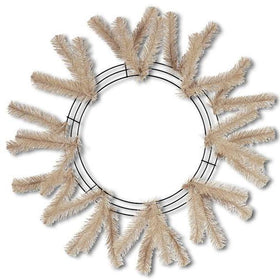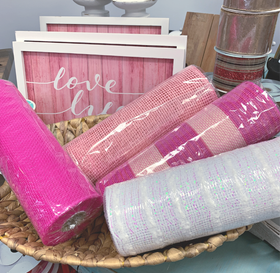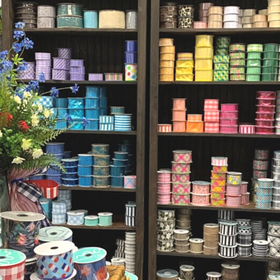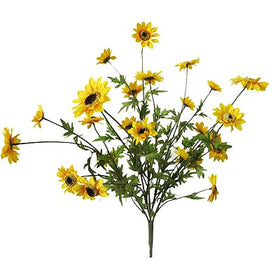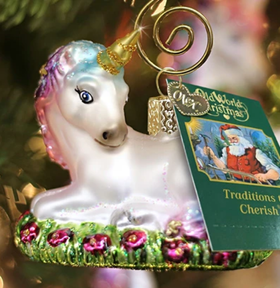First a Bit of History: The lighted Christmas tree was the creation of Edward H. Johnson, an associate of inventor Thomas Edison. While he was vice president of the Edison Electric Light Company he had Christmas tree light bulbs especially made for him. He proudly displayed his Christmas tree, which was hand-wired with 80 red, white and blue electric incandescent light bulbs the size of walnuts, on December 22, 1882 at his home on Fifth Avenue in New York City. Johnson has become widely regarded as the Father of Electric Christmas Tree Lights. By 1900, businesses started stringing up Christmas lights behind their windows.
Christmas lights were too expensive for the average person; as such, electric Christmas lights did not become the majority replacement for candles until 1930.
More Christmas Light Historical Moments:
1895 President Grover Cleveland had the first electrically lit Christmas Tree in the White House
1904 San Diego had the first recorded use of outside Christmas lights
1956 Even though the tree at Rockerfeller Center had lights dating back to 1931, it was 1956 before it had electric lights
1950's In the mid 1950's, the average household was using electric Christmas lights for their home
1956 Disney Christmas Tree had electric lights
Modern Day Lights Tutorial
Mini Lights: Mini Christmas lights are the most commonly used Christmas lights. The bulbs are candle shaped with a slightly pointed tip. Mini lights are generally about 1/4" in diameter and 5/6" in ht. They can be purchased in the incandescent and LED form. Mini lights can be purchased in all sorts of colors and lengths, flashing, non flashing and twinkle. Mini lights can be found with either green, brown or white wires.
C-6 Lights: These are the smallest of the strawberry-shaped lights that many consider the traditional Christmas bulb shape. The bulbs are generally 3/4 inch in diameter and 1 1/8 inches tall. They can be found in incandescent and LED options.
C7 Lights: Have the same strawberry shape as C6 Christmas lights but are slightly larger. C7 Christmas lights measure 1 inch in diameter and 1 1/2 inches tall. Their width gives them a rounded, bulbous look. They can be purchased in both incandescent and LED type.
C9 Lights: Just
slightly larger than theC7 Christmas lights. Theymeasure 1 inch in diameter and 1 1/2 inches tall. Their width gives them a rounded, bulbous look.
G Series Lights: These lights are shaped like globes or berries and come in a wide variety of sizes. The number after the G designates the maximum diameter of the bulb in eighths of an inch. To calculate the approximate diameter, you simply take the number after the G, divide it by 8, and round to the nearest inch. For example, G25 is a globe-shaped bulb approximately 3 inches in diameter, and G15 is a globe-shaped bulb that is almost 2 inches in diameter. G Series lights can be purchased in the LED and incandescent varieties.
Wide Angle LED Lights: These miniature LED Christmas lights have a wide angle lens that diffuses light outward instead of focusing it at the tip of a bulb. Because of their ability to spread light, Wide Angle LED lights are another option when striving for a brighter effect than traditional mini lights can provide.
Commercial Lights: Commercial Christmas lights are made with heavier gauge wire than residential lights. That means they can carry more power more efficiently over longer distances than regular strings of lights. The wire itself will be more durable as well.
Novelty Lights: Novelty lights are as unlimited as your imagination! Everything from hot peppers to old fashioned bubble lights, all sorts of shapes, sizes and colors can be found. Rice lights are tiny, tiny little lights and rope lights.....are just that...rope lights))
Incandescent vs LED Lights: According to Consumer Reports, price is a toss up when deciding on either incandescent or LED. LED C7 C9 generally are more expensive and have shorter strings. Mini LED lights may have the some number of lights and length of string, but cost a little more also.
Energy: Energy saving was better with LED using 1 to 3 kilowatt hours of energy, compared with 12 to 105 kWh for the incandescents.
Durability: On the Consumer Reports test, LED bulbs worked even after 4,000-plus hours, while each string of incandescents had one or more bulbs burn out before 2,000 hours. The LED bulbs we bought were also plastic and therefore less likely to break than the glass incandescents.
Brightness: Incandescents won. The C9 and C7 incandescents were five to six times brighter than the LEDs, though the mini incandescents were slightly dimmer than the mini LEDs.
Summation: Per Consumer Reports: LEDs are better for the environment; run much cooler, reducing fire risk; should last longer; and could save money eventually. But it's apt to take more than one holiday season for the savings to kick in, and you might not realize any savings if payback takes more than three 90-day seasons. As a rule, you shouldn't use decorative lights longer than that.
How Many Lights Does My Tree Need? First off, it's personal preference. But here are a few tips to help you decide based on the size of the tree and type of lights. The amount of ornaments and decorations on your tree are a factor also. Sometimes there is nothing more stunning that a beautiful green tree with nothing but lights.
Another quick estimate would be to use 100-150 lights per foot of tree (starting with a 6 ft tree). This method results in more lights than the above table.
To determine the number of C7 or C9 lights for your tree, try the following:
Ht x diameter (divided by 2) for trees up to 7 feet = number of lights.
Ht x diameter (divided by 3) for trees 7 1/2" and up = number of lights.
Example: 7 ft tree with 45" diameter
7 x 45 (divided by 2) = 157 lights
Safety Tips:
- Do not connect mini lights end to end to C7 or C9 lights
- Inspect for frayed wires, loose connections, broken bulbs, loose bulbs
- Look for the "UL Listed" tag
- Use "Outdoor" lights for exterior decorating only - do not use inside
- Plug no more than 3 strings of lights of mini lights into an extension cord
- For C7 and C9 or larger bulbs, string no more than 50 lights together
- Turn lights off when you leave home or when you go to bed
- Use surge protectors
Lighting a Fresh Tree
- Divide the tree mentally into three triangular sections from top to bottom around the tree's cone
- Plug in the first string of lights and start at the top, placing the last bulb on the string at the top of the tree next to the trunk.
- Weave the lights back and forth across the triangle being careful not to cross the cord over itself.
- When you get to the end of the first string, connect the next and continue to weave (connecting no more than 300 together).
- Repeat for the remaining triangles
- Step back and gaze at the tree. Look for any black spaces and adjust lights as necessary.
- Lights can be kept tangle free by removing in a reverse action
Lighting an Artificial Tree
- Artificial trees come in umbrella style section. Use some patience and puts your lights on carefully and plan to leave them permanently.
- Light each section separately. (Don't cross a section or assembly point with lights)
- 50 Light strands are easier to work with
- Begin at the bottom of the tree near the trunk
- Wrap your beginning string around the base of the branch near the trunk, pull the string taunt to the tip of the branch, then wind the string back down the branch toward the trunk, continue over to the next branch.
- Continue working in the manner until you reach the point where the tree breaks. Wind any extra lights back along the branch rather than crossing to another section.
- When you wrap the top section of the tree, don't wrap the lights around as many branches so the tree will look evenly lit from top to bottom.
- To make your lighting bolder, wrap some lights around the trunk itself.
- For spectacular lighting - wrap each lateral branch with lights as you work you way back down the branch.
In conclusion:
- Buy the best lights you can afford
- Buy more than you think you'll need
- Remember you may not can find replacement bulbs for unusual lights
- You need "cool" burning lights on real trees and make note of the recommendations on the box when using larger lights on artificial trees
- Sit back and enjoy your masterpiece!

